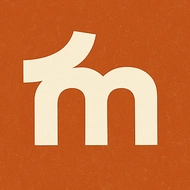I am quite sure all of us have at least one friend who has recently become a DJ. Becoming a DJ has never been easier, thanks to technology that has democratized the craft.
The barriers to entry have dropped dramatically – you no longer need thousands of dollars in equipment or insider connections to get started.
Whether you dream of rocking festival stages or want a creative hobby or a side hustle, modern DJ technology puts professional-quality tools within reach of any motivated beginner.
DJ equipment for beginners
The foundation of your DJ setup is the controller, and fortunately, there are excellent options for every budget.
DJ Controller (Deck)
A DJ controller is the centerpiece of your setup — it gives you physical control over mixing, cueing, EQing, scratching, and effects. For beginners, it’s far easier than using a mouse and keyboard, and most controllers come ready to plug in and play.
Beginner Models:
- Pioneer DDJ-FLX4 (~$300)
- Numark Mixtrack Pro FX (~$250)
- Hercules Inpulse 500 (~$300) Tip: Start with a 2-channel controller. It keeps learning simple and you can upgrade later.
DJ Software
Your DJ software is where all the mixing happens — managing your music library, controlling effects, and linking directly to your controller. Fortunately for beginners, many top-tier programs offer entry-level versions or affordable paid tiers. This gives you access to the same software many professional DJs use.
Paid Options Used by Real DJs:
- Serato DJ Pro — Approx. US $249 (one-time) or US $11.99/month. Widely trusted by club and mobile DJs thanks to reliability and hardware compatibility.
- Rekordbox — Approx. US $23/month (Core plan). Created by the same company as the club-standard gear, making it a strong choice if you plan to play clubs.
- VirtualDJ Pro — Approx. US $19/month or one-time US $299 for “Pro Infinity”. Used by many professionals, especially those mixing video or streaming.
Free / Budget Alternatives:
- Serato DJ Lite — Free. Great to start with before upgrading.
- Mixxx — Completely free, open-source. A great way to learn without spending anything.
Tip:
Choose one software, stick with it, and learn it well. Familiarity beats switching between multiple programs. Ensure your controller works with your chosen software and don’t rush into the highest tier until you really need those advanced features.
Speakers / Studio Monitors
Speakers let you hear your mix properly. While you can start with computer speakers or even headphones, studio monitors give you a much clearer representation of your sound so you can learn to mix more accurately.
Beginner Options:
- Pioneer DM-40 / DM-50D ($150–$250)
- Mackie CR3-X (~$100)
- KRK Rokit 5 (~$300–$400)
Tip:
Place your monitors at ear level and angle them slightly inward for best results.
DJ Headphones
Headphones are used to preview (cue) tracks before you mix them in. They help you beatmatch, prepare transitions, and catch mistakes before the audience hears them. Even inexpensive headphones will improve your mixing accuracy dramatically.
Beginner Options:
- Audio-Technica M20x (~$50)
- Pioneer HDJ-CUE1 (~$70)
- Sony MDR-7506 (~$100)
Tip:
Closed-back headphones are best because they block outside noise.
In Summary: The Only Gear a True Beginner Needs
If you already have a laptop, you only need:
- A beginner DJ controller
- Affordable/free DJ software
- A pair of speakers
- Headphones
- Basic cables
With just these essentials, you can start mixing, practicing transitions, and learning the craft — without overwhelming yourself or overspending.
Building Your Music Library
A strong music library is essential. Buy tracks legally from places like Beatport, iTunes, Amazon, or Bandcamp, and consider DJ record pools ($20–$50/month) for clean edits, instrumentals, and acapellas. Organize your music by genre or energy, use clear file names with BPM and key, and tag tracks inside your DJ software. Add cue points during practice so you know exactly where drops, vocals, and transitions happen.
Learning Path for Beginners
In the first two months, focus on basics: manual beatmatching, understanding song structure, and smooth EQ transitions. In months three and four, add creativity—use effects lightly, practice harmonic mixing, and record your sessions for feedback. By months five and six, build full one-hour sets, share recordings, try livestreaming, and connect with local DJs to prepare for real gigs.
Modern DJ Opportunities
Today’s DJs earn from far more than club gigs. Streaming on Twitch or YouTube can bring donations and global fans, while TikTok and Instagram help grow your brand. AI tools now assist with track suggestions, beatmatching, and stem separation, making it easier to be creative without replacing core skills.
Monetization Paths
Mobile DJ gigs like weddings pay the most ($500–$2,000), while club gigs pay less but help build reputation. Streaming adds extra income, and teaching beginners can become a steady revenue stream. Producing remixes or original tracks opens the door to royalties and higher booking fees.
You can start DJing with minimal gear and free software. Focus on fundamentals, practice consistently, and upgrade slowly. Modern tools and online platforms offer huge creative and income opportunities. Every pro DJ started as a beginner—your journey starts with your first mix.


Top comments (0)